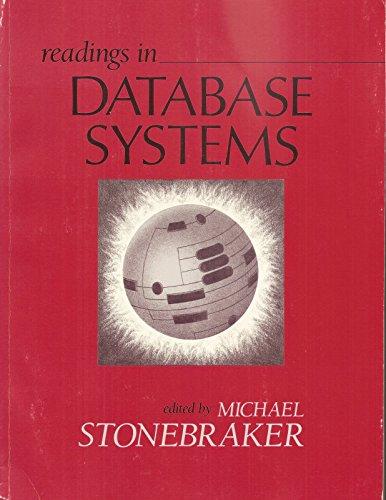Answered step by step
Verified Expert Solution
Question
1 Approved Answer
Implement the following (recursive) algorithm: Integer getItemInOrder( al , left , right , sizeRanking ) { pivotIndex partialOrder( al , left , right ) //
Implement the following (recursive) algorithm:
Integer getItemInOrder(al, left, right, sizeRanking) { pivotIndex partialOrder(al, left, right) // Partially order the elements between left and right // The pivot is in its final sorted position if sizeRanking = pivotIndex return the element in al at index sizeRanking // Solution found! else if sizeRanking < pivotIndex return getItemInOrder(al, left, pivotIndex - 1, sizeRanking) // The pivot was too large, so recurse with the smaller values else return getItemInOrder(al, pivotIndex + 1, right, sizeRanking) // The pivot was too small, so recurse with larger values end if
Complete the upper getItemInOrder method so that it starts the recursion (serves as the public method hiding the recursion).
public static int getItemInOrder(ArrayListal, int sizeRanking) { // You can just assume that sizeRanking is between 0 and al.size()-1 (inclusive) } /** * Finds the item at the given ranking (from smallest to largest) in the array list WITHOUT sorting the data. It will * do this by only considering the ArrayList elements at the indices between left and right. Each recursion halves the * number of elements under consideration. * * @param al ArrayList of unordered data to be examined * @param left First index of data which is in consideration * @param right Last index of data which is in consideration * @param sizeRanking Ranking of the item to be selected. When {@code sizeRanking} is 0, the method needs to return * the smallest item in {@code al}; if {@code sizeRanking} is {@code al.size() - 1}, the largest item is * returned. * @return The {@code sizeRanking}-th smallest item from the array list. */ private static int getItemInOrder(ArrayList al, int left, int right, int sizeRanking) { // You can just assume that sizeRanking is between 0 and al.size()-1 (inclusive) } /** * This is a helper method which partially orders the array list into left and right parts. The left part of the array * list will contain all of the values smaller than the element initially midway through the range between left and * right. The right part of the array list will contain all of the larger elements. * * @param al ArrayList of data which will be partitioned * @param left Leftmost index to be included in the partition * @param right Rightmost index to be included in the partition * @return The index at which the element originally at pivotIdx ends up. */ private static int partialOrder(ArrayList al, int left, int right) { int pivotIdx = (left + right) / 2; int pivot = al.get(pivotIdx); al.set(pivotIdx, al.get(right)); al.set(right, pivot); int storeIdx = left; for (int i = left; i < right; i++ ) { if (al.get(i) < pivot) { int temp = al.get(storeIdx); al.set(storeIdx, al.get(i)); al.set(i, temp); storeIdx += 1; } } al.set(right, al.get(storeIdx)); al.set(storeIdx, pivot); return storeIdx; } }
Step by Step Solution
There are 3 Steps involved in it
Step: 1

Get Instant Access to Expert-Tailored Solutions
See step-by-step solutions with expert insights and AI powered tools for academic success
Step: 2

Step: 3

Ace Your Homework with AI
Get the answers you need in no time with our AI-driven, step-by-step assistance
Get Started


